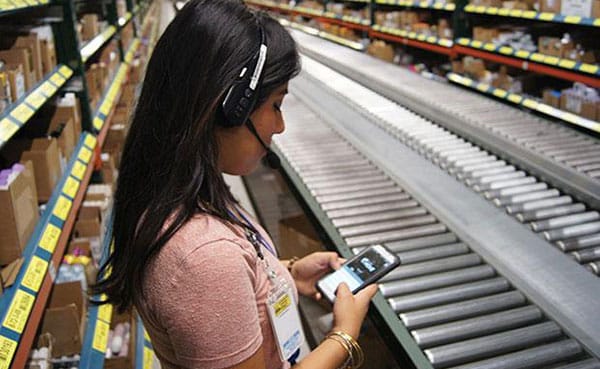A Lucas project manager just returned from a Lucas voice-picking deployment with a story of “Joe The Selector” who thought voice was never going to work in his DC. Like most other voice skeptics, this “Joe The Skeptic” became “Joe The Voice Champion” his first day working with Jennifer. Joe is not alone. Lots of new users view a voice deployment with a mix of technophobia and skepticism.
Technophopia. Warehouse workers are no more fearful of technology than the rest of us. But DCs moving from paper to RF or voice have to take special care with users with limited computer experience. Fortunately, moving to voice is typically easier than moving to RF. While RF apps often use function keys and special input codes, voice applications rely on verbal instructions and spoken responses that are short, simple and intuitive (click here to access videos of voice applications in use). Better yet, today’s modern voice systems running on standard RF terminals like the Motorola MC3190, Intermec CK3, or Honeywll MX8 offer easier, more user-friendly training and sign on processes than legacy voice systems using voice-only terminals.
Signing on to Jennifer on a standard RF terminal is like signing on to an ATM – just touch a button on the screen, and key in a username and password. (This screen-based process is also more secure than a voice-enabled process, but that’s a different subject.) Likewise, voice training with Jennifer uses audio prompts and screen-based information (text and pictures) that guides users through the process. This is a far better way to introduce people to their voice terminal than using a special-purpose training device (which may be required with some voice-only systems) or a training program that uses audio-only or text-only prompts.
Skepticism.
When some people hear they are going to be using voice recognition systems, the first thing they think about is a bad experience with the voice recognition systems (IVR) used by credit card companies, banks, insurance companies, etc. “If a voice recognition system can’t understand me when I’m talking on the phone in my living room, how is it going to understand me when I’m picking cases in my warehouse?”
The point is that you wouldn’t want to put an IVR system in a warehouse. While the underlying technology used in those general purpose systems has advanced tremendously, warehouse voice applications require additional recognition and noise-handling capabilities to work effectively. That’s why it’s so critical to use voice technology that is proven in a warehouse.
The bottom line is that today’s voice systems offer built-in advantages to help overcome skepticism and technophobia. But the technology only goes so far: The surest way to turn Joe The Skeptic into a champion is to get his buy-in before you install the system. That is the subject for a future post.
Do you have anything to add to this subject? Whether you’re a skeptic or a technophobe, we’d like to hear from you. What strategies do you use to get associate buy-in for process changes or technology upgrades in your DC?





